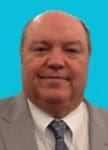The Fourth-Party Challenge
The identification and monitoring of fourth-party vendors has become an increasingly important piece of the vendor management puzzle, especially with the announcement of SSAE 18, which takes effect in just a few months. SSAE 18 requires the monitoring of your third-parties’ subcontractors – your fourth parties – which can be difficult to trace.
By now you are likely aware that the American Institute of Certified Public Accountants (AICPA) has announced an updated Statement on Standards for Attestation Engagements (SSAE 18), which will take effect on May 1, 2017. The key difference of SSAE 18, compared to the widely known SSAE 16 that it will supersede, is the required monitoring of your service providers’ service providers — otherwise known as subservice organizations or fourth-party vendors.
But who are your fourth-party vendors? As many people in vendor risk management roles are discovering, it’s often difficult to identify an organization’s fourth-party vendor relationships. While no formal business relationship exists, these subservice organizations supply to the third-party vendors with whom your company does have a contract.
Let’s try an example: Your organization has a contract with ABC Mortgage, which provides you with mortgage servicing. ABC Mortgage has a contract with XYZ Data Processing, which provides them with the software solution that is used to service your organization’s mortgages. In this scenario, ABC Mortgage is your third-party vendor with whom you have a contractual business relationship, while XYZ Data Processing is your organization’s fourth-party vendor because their contract is with ABC Mortgage.
Great, so now you’ve identified who your fourth-party vendors are… now why should you care about monitoring them? Fourth-party providers, or your organization’s subservice organizations, provide pieces of the services or products you receive from your contractual third-party vendors and they may be housing your customers’ Non-Public Personal Identification Information (NPPII). Taking another look at our previous example, if XYZ Data Processing became unavailable due to a data breach event, ABC Mortgage may not be able to service your mortgage loans without disruption, or they may not be able to meet the tight mortgage servicing regulatory requirements. In this scenario, our financial institution must bear the risk of vendor failure, breach and regulatory penalties.
Fourth-party oversight is not an entirely new concept; it has been specified in multiple regulatory updates, including of course the new SSAE 18 standard and the following excerpt from the FFIEC IT Examination Handbook, Appendix J, which was released on February 6, 2015. In this excerpt, subcontractors are synonymous with fourth-party vendors:
“Subcontracting:
If agreements allow for subcontracting, the TSP’s contractual provisions should also apply to the subcontractor. Contract provisions should clearly state that the primary TSP has overall accountability for all services that the TSP and its subcontractors provide, including business continuity capabilities. Agreements should define the services that may be subcontracted, the TSP’s due diligence process for engaging and monitoring subcontractors, and the notification requirements regarding changes to the TSP’s subcontractors.
The contractual provisions should also address the right to audit and BCP testing requirements for subcontractors. Additionally, agreements should include the TSP’s process for assessing the subcontractor’s financial condition.
Strategic Considerations – Third-Party Management
The financial institution should ensure that each TSP has a robust third-party management program that includes a review of each subcontractor’s business continuity plan. The failure of a subcontractor could result in the failure of the TSP’s ability to provide contracted services.”
In June 2015, the Cybersecurity Toolkit was introduced by regulators as a self-assessment instrument. Since then, it has evolved into the blueprint for regulatory review of vendor management. Relationship Management is contained within the Cybersecurity Toolkit as Domain Four.
One of the questions posed to validate that an organization’s vendor management program meets a defined intermediate maturity level, which would be required by institutions of any reasonable scale and sophistication, reads:
“A process is in place to confirm that the institution’s third-party service providers conduct due diligence of their third parties (e.g., subcontractors).”
The challenge for vendor management organizations is in identifying material fourth-party vendors. Many times, these key subcontractors are only uncovered through scrutinous onboarding or periodic due diligence. Many times, an organization’s third-party vendors are reluctant to reveal their level of commitment and dependency on their own vendors. This lack of transparency is one of the cornerstones of the regulatory assertion that vendor management must understand and evaluate the risks posed by fourth-party vendors.
All of the heightened focus on fourth-party oversight should change the conversations you’re having with your current vendors, and vendor management organizations must also direct this added layer of vendor research. Many times, a control audit from a subcontractor providing data processing services will be the only indication that a fourth-party relationship is engaged. Oversight, however, must go beyond awareness. Have you requested or reviewed the accompanying financials of the fourth-party, and have they been reviewed by your information security department with regard to where your data resides? These are questions you will want to have answers prepared for during your next exam, and a few breadcrumb trails of fourth-party providers will not be sufficient.
The key to obtaining knowledge about fourth-party providers is including them in your ongoing vendor monitoring program. This is where you need to ensure that your vendor management solution allows the clear identification, linkage and monitoring of news and alerts from fourth-parties that may have impact upon your contracted third-party vendors.
You should be asking your third party vendors:
- To provide a copy of their vendor management policies and procedures
- To provide a list of their critical/essential third-party providers and evidence of their vendor risk assessments per your policy
- If they utilize any insourcing providers, i.e., an external company managing key aspects of the business on-site, such as Human Resources, the mail room or the data processing help desk
- How their technology infrastructure and data processing conditioned environment is structured, i.e., owned and operated versus other variations (cloud-provided, colocation, outsourced, facilities-managed, etc.).
With SSAE 18 right around the corner, it might be time to perform a self-assessment of your organization’s vendor management program. Take your top five vendor relationships. Ask someone at the highest authority the following question: Who are the top five vendors (fourth parties) for each of OUR top five vendor relationships? See if you are satisfied with the organizational response and speed of delivery.



 Jay G. Fitzhugh is the Chief Regulatory Officer within the GRC Division of
Jay G. Fitzhugh is the Chief Regulatory Officer within the GRC Division of 








